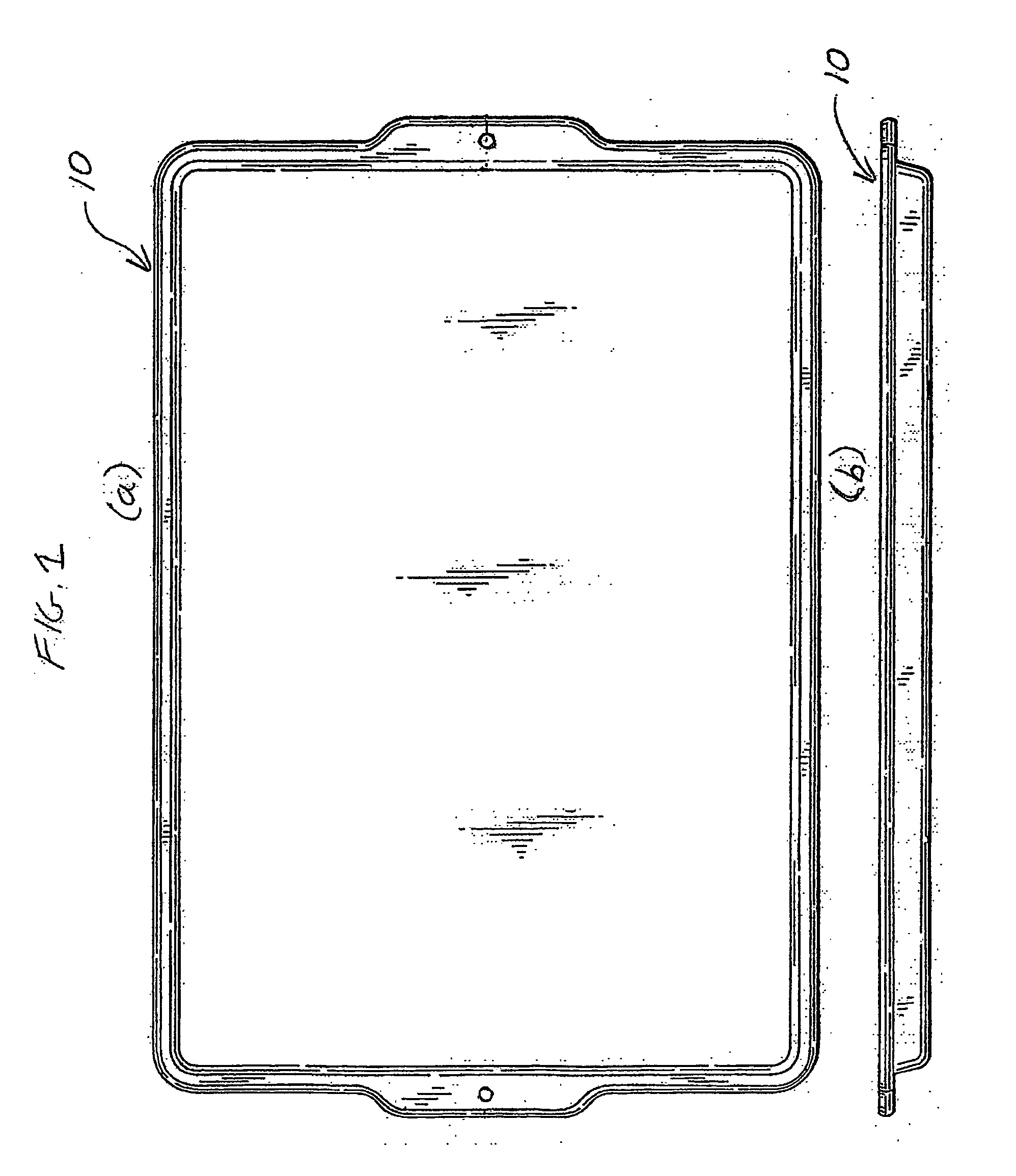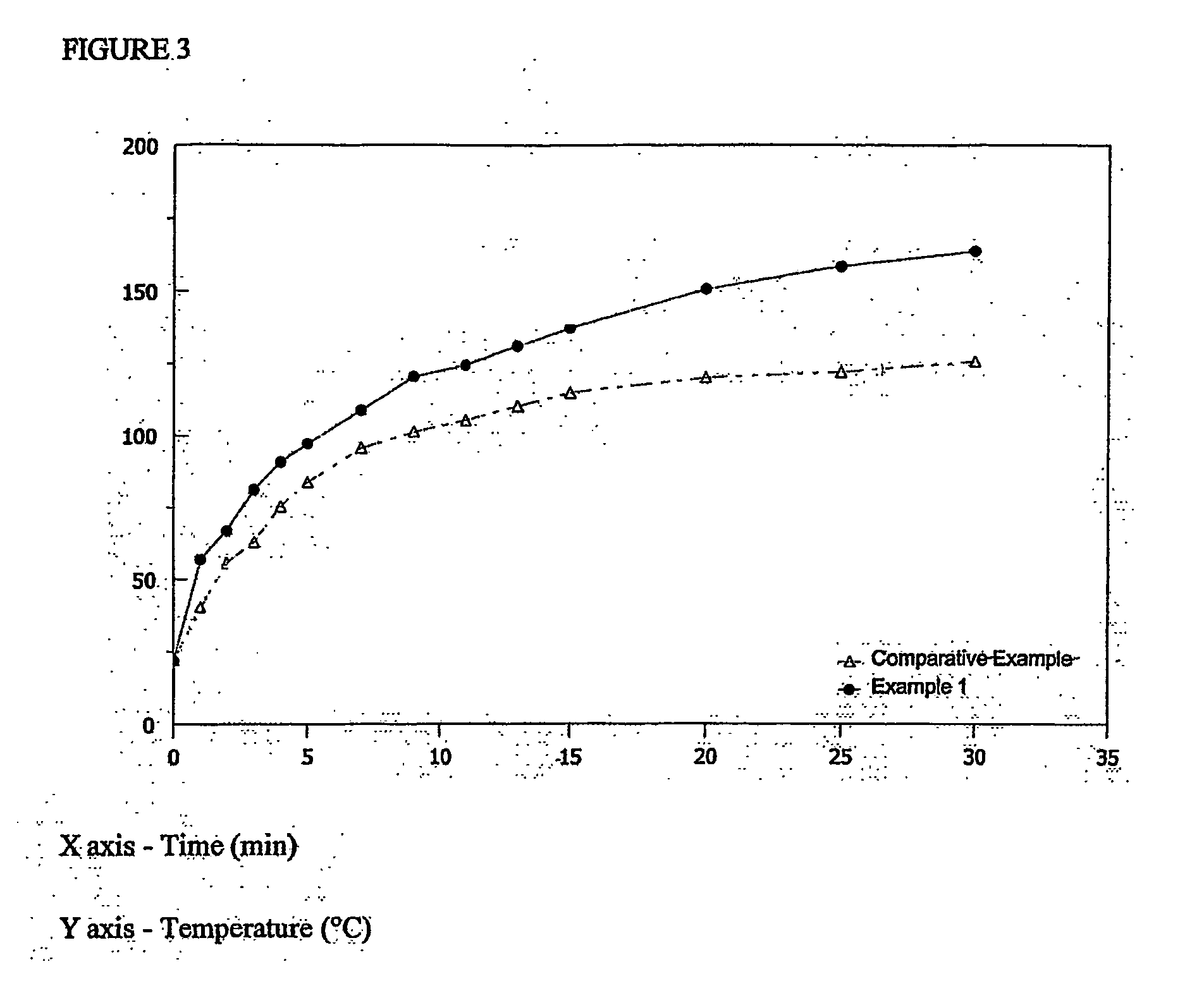Thermally conductive liquid crystalline polymer compositions and articles formed therefrom
a technology composition, which is applied in the field of liquid crystalline polymer composition, can solve the problems of increasing production cost, poor release properties of metal materials, and inability to maintain non-stick coatings, so as to increase the conductivity of the polymer composition, and achieve uniform transfer
- Summary
- Abstract
- Description
- Claims
- Application Information
AI Technical Summary
Benefits of technology
Problems solved by technology
Method used
Image
Examples
example
[0050] The following materials were used in the formulations. The LCP used in the example is XYDAR® SRT-900, a wholly aromatic polyester having a melting point of 350° C. The talc used is VERTAL® 1000 and the glass fiber is CERTAINTEED® 910. The aluminum flakes are Transmet Corporation K-102 1 mm square flakes having a thickness of 25 μm.
example 1
[0052] 45% by weight of XYDAR® SRT-900, 45% by weight of Transmet Corporation K-102 aluminum flakes and 10% by weight of CERTAINTEED® 910 glass fibers.
[0053] The individual formulations were compounded on a Berstorff twin screw extruder. Subsequently, 4 in×4 in×⅛ in plaques were molded. The thermal conductivity through the thickness was measured and reported in the Table 1 below. The tip of a thermocouple was located at the center of a 4 in×4 in plaque and covered with bread dough. The arrangement plaque / thermocouple / dough was placed in an oven preheated at 250° C. The temperature was recorded as a function of time and the surface of the bread was observed after a 30 minute cycle. Results are depicted in FIG. 3.
[0054] Tests were also carried out to verify if browning occurs during cooking. Browning occurs when the temperature at the bread surface reaches 150° C. or more for 5 to 10 minutes. Browning of the bread occurred in Example 1. As shown in FIG. 3, the temperature of Example...
PUM
| Property | Measurement | Unit |
|---|---|---|
| particle size | aaaaa | aaaaa |
| particle size | aaaaa | aaaaa |
| thickness | aaaaa | aaaaa |
Abstract
Description
Claims
Application Information
 Login to View More
Login to View More - R&D
- Intellectual Property
- Life Sciences
- Materials
- Tech Scout
- Unparalleled Data Quality
- Higher Quality Content
- 60% Fewer Hallucinations
Browse by: Latest US Patents, China's latest patents, Technical Efficacy Thesaurus, Application Domain, Technology Topic, Popular Technical Reports.
© 2025 PatSnap. All rights reserved.Legal|Privacy policy|Modern Slavery Act Transparency Statement|Sitemap|About US| Contact US: help@patsnap.com



